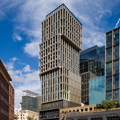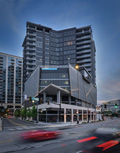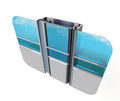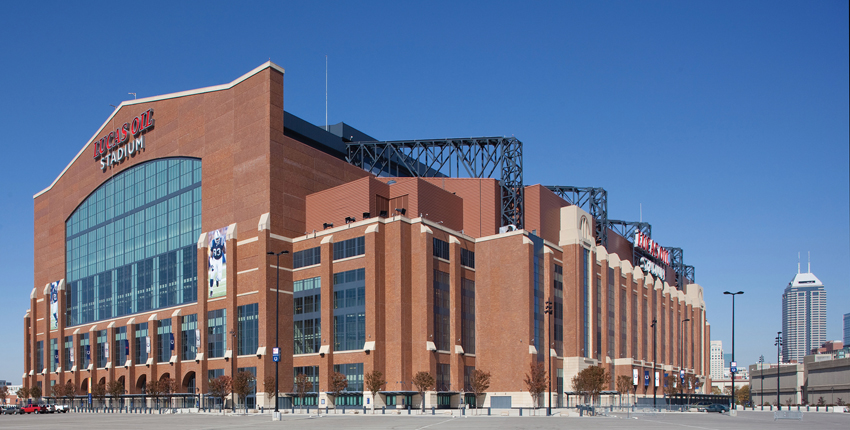Blending Aesthetics and Sustainable Design Through Facades
Natural stone can be shipped as large-scale, thin, lightweight prefab panels on UHPC. Natural stone not only creates a unique facade, but it also reduces the carbon footprint in manufacturing processes, transportable weight on the roads, and the structure.
Ultracompact surface materials can be specified, manufactured, and cut into large panels for a visually appealing facade that has fewer seams that need to be sealed in the building envelope.
Glass panels can be manufactured, cut into various large panel shapes and sizes, and installed on the exterior facade. Tempering processes during manufacturing as well as glass coatings help reinforce the glass, making it more durable and aesthetically pleasing both for occupants indoors and for those viewing the structure from the outside. Coatings also can be used to reduce heat transfer and glare.
SUSTAINABILITY
In addition to creating aesthetically pleasing and unique facades, natural and durable materials promote sustainability in a few different ways. The first is by reducing the carbon footprint through a reduction in energy usage during manufacturing as well as for the life of the material.
Manufacturing of thin brick uses significantly less energy when compared to manufacturing full-width brick. A larger number of thin bricks can be transported in a single shipment, thus reducing carbon emissions used in transit. Thin brick also can help increase efficiency by absorbing and then storing heat, slowing its movement through the wall. The thin brick veneer can hold the heat on the exterior rather than releasing it to the inside of the building, in this way helping to reduce strain on the HVAC system and lowering energy costs.
Natural materials such as natural stone do not require additional firing or processes compared to man-made materials such as glass, concrete, steel, brick, or terracotta. This ensures additional heat and carbon are not released into the atmosphere by a kilning/sintering or firing that can be 2000°F or more.
Waste created in the quarry and during fabrication, can be reused and recycled to make aggregate, calcium carbonate, and substitute recycled content. Stone sludge from sawing blocks can also be used in green brick which contains up to 60% recycled content.
High performance materials can be thinner and therefore use less carbon, not only in the incorporation of materials but also during manufacturing and transportation to job sites. The weight reduction of the large-scale thin facade natural stone panels on UHPC is light enough to be floor-loaded, leading to a tremendous reduction in weight during transportation as well as on the superstructure and foundations, all of which allows an additional reduction in carbon emissions.
Durable materials are built to withstand the elements and therefore do not regularly require extensive repairs or early replacement. Long-lasting materials like natural stone can be employed for extended periods of time. While the initial cost of some materials may be higher when specified and installed, costs can be recuperated in energy savings over time and a longer lifespan. Additionally, materials that have a longer life do not need to be replaced, and so they do not end up in the landfill or need to be recycled as frequently.
In thin brick applications, the keyback design provides a mechanical lock into the concrete for maximum durability and permanence. This design brings added strength and performance with an increased sheer value and pull-out strength. Both of these attributes lead to a longer product life and fewer replacement costs along with less material waste. When brick does reach the end of its life, it can be recycled as it is made from abundant, natural materials.1
Notice

www.alucobondusa.com/

www.pro.cosentino.com

www.endicott.com

www.hofmann-facades.com

www.inpro.com

www.neolith.com

www.vitroglazings.com











